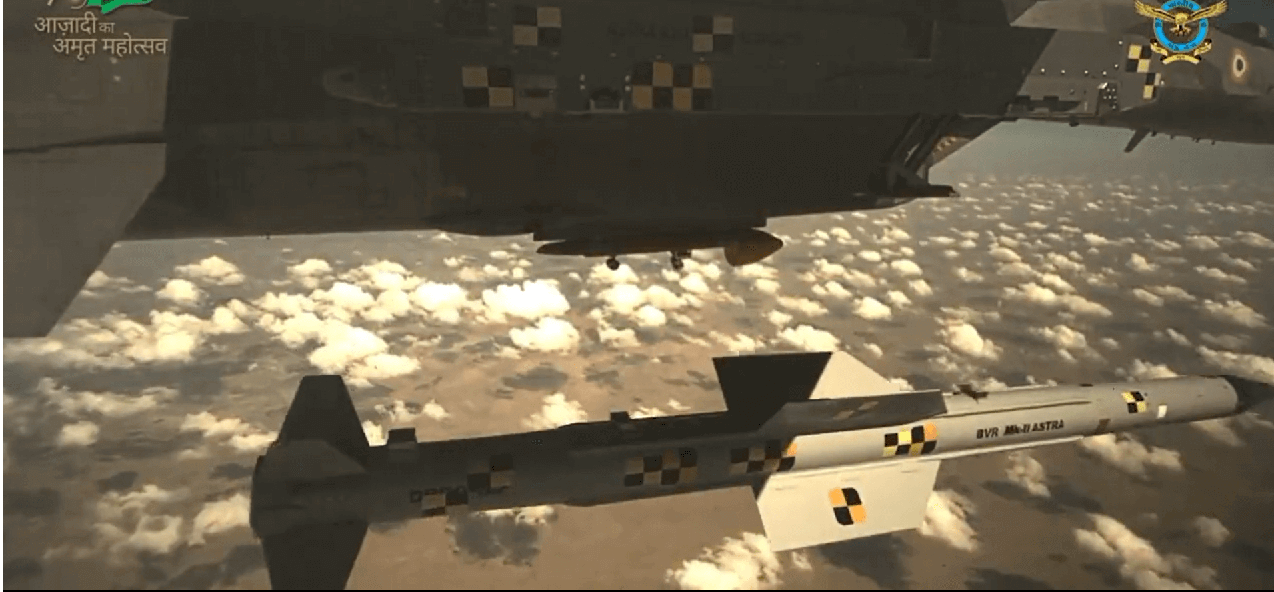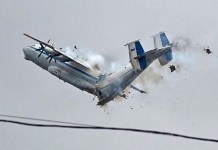Aerial combat has undergone a major shift globally over the last few decades, from close-quarter dogfights to Beyond Visual Range (BVR) engagements. India, like many others, is investing heavily in the long-range aerial combat capability.
The Indian Air Force (IAF), for one, has a storied legacy of excelling in close-quarter dogfights with short-range missiles and cannon on fighter jets. This capability was especially demonstrated during the Indo-Pakistan war of 1971, when superior piloting skills, tactical maneuvers, and effective use of onboard guns and short-range missiles helped IAF pilots score multiple kills.
These battles demonstrated the IAF’s dominance in within-visual-range (WVR) engagements against an enemy with comparable technology.
However, as aerial combat evolved, long-range engagement became the norm, and the Indian Air Force started acquiring Beyond-Visual Range Air-to-Air Missiles (BVRAAMs). In fact, emerging from an intense conflict with Pakistan and faced with a sustained security threat from China, India is now pouring millions of dollars into bolstering the firepower of its fighter jets and expanding its arsenal of these coveted long-range weapons.
According to reports, India is poised to place an order for a large number of European Meteor missiles for its frontline advanced Rafale fighter jets.
Citing unidentified defense sources, ANI News reported that a 1,500-crore ($180 million) proposal to purchase these lethal precision missiles is currently at an advanced stage in the Ministry of Defense and is expected to be approved at a high-level meeting soon.

Developed by MBDA, Meteor is a beyond visual range air-to-air missile with a range of 200 kilometres, and the longest-range air-to-air missile in the IAF’s inventory. The missile is already equipped on the 36 Rafale fighters operational in the IAF, and will be integrated with the 26 Rafale-Marine ordered by the Indian Navy for carrier operations.
Meteor utilizes a ramjet engine, which enables it to sustain high speeds throughout its flight, including during the terminal phase of engaging a target aircraft. The Meteor’s data link also has two-way capability, so the pilot can re-target the missile while it is already in flight.
The pilot can also view the missile’s fuel, energy, and tracking state in real-time. Additionally, the missile is known for its large no-escape zone, which enables a “first-shot, first-kill” advantage.
The Meteor can also engage small targets such as UAVs and cruise missiles in a heavy electronic countermeasures (ECM) environment. The manufacturer MBDA earlier claimed that Meteor has three to six times the kinetic performance of current AAMs.
India’s move to acquire additional Meteor missiles aligns with a broader international trend. Both of India’s major adversaries, Pakistan and China, possess long-range missiles. For instance, Pakistan’s PL-15E has a range of up to 145 kilometres, and China’s PL-15 has a range of over 200 kilometres. In fact, China has also developed missiles with ranges exceeding 200 kilometers, such as the PL-17 and the PL-21.

Pakistan claimed to have launched the PL-15E against India in the brief 4-day combat, and claimed to have downed multiple Rafale fighter jets, a claim India flatly rejected.
The IAF, in its official briefings, stopped short of mentioning whether the Meteor was used against Pakistan. However, unconfirmed reports in the Indian media suggested that Rafales armed with Meteors might have engaged PAF J-10Cs and JF-17s launching PL-15 missiles.
India Is Investing Billions In Long-Range Missiles
In addition to the Meteor, the IAF currently uses potent long-range air-to-air missiles such as the R-77 (range of 80-100 kilometers) and the Astra Mk-1 (range over 100 kilometers), among others.
While the R-77 has been in service for more than two decades, the Astra missile was officially inducted in 2019 and is now fully operational, integrated with frontline platforms such as the Su-30MKI and the Light Combat Aircraft (LCA) Tejas Mk-1.
Meanwhile, reports suggest that the Defence Research and Development Organisation (DRDO) is poised to extend the range of the Astra Mark-2 (Mk2) air-to-air missile to over 200 kilometres, up from the previously known 160 kilometres. The IAF could acquire about 700 Astra Mk2 missiles, according to a detailed proposal earmarked for discussion by the Indian Ministry of Defense (MoD) in the “near future.

The longer-range, indigenous Astra Mk2 air-to-air missile will be outfitted on Tejas and Su-30 MKI jets after successful trials.
Furthermore, the DRDO is already working on its longest-range missile to date, the Astra Mk-3 named ‘Gandiva.’ According to reports, this missile can strike enemy aerial targets at ranges of 340 kilometers when the target is at an altitude of 20 kilometers, and 190 kilometers when the target is at an altitude of 8 kilometers. The Astra Mk-3 is expected to redefine the landscape of aerial warfare.
The EurAsian Times reached out to IAF veteran and military commentator Air Marshal Anil Chopra (retd) to understand what other missiles India could acquire to augment its long-range combat capability.
“R-37M,” said the veteran without missing a beat.
Incidentally, Russia had formally proposed the sale of its long-range R-37M air-to-air missile, exported as the RVV-BD, to India at the Aero India 2025, along with an offer to undertake local production under the “Make in India” initiative. The export variant reportedly has a range of about 200 kilometers and is designed to target high-value assets such as Early Warning aircraft, tankers, and bombers.
In March, Russian state arms exporter Rosoboronexport (ROE) confirmed that Russia and India are engaged in discussions on the joint development and production of modern guided aircraft missiles.
The two sides are exploring the possibility of co-producing such systems in India with the added goal of exporting to friendly third countries.
While a decision is yet to be taken, military analysts believe that the R-37M with over 200 kilometres range and hypersonic speed would be a critical upgrade to address gaps in beyond-visual-range (BVR) capabilities against regional threats.
If approved, it could seamlessly be integrated with the Su-30MKI.
- Contact the author at sakshi.tiwari13 (at) outlook.com
- Follow EurAsian Times on Google News




